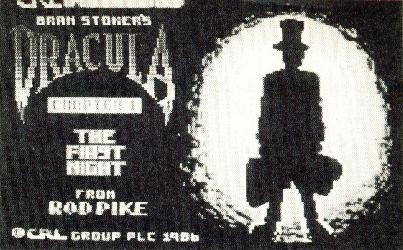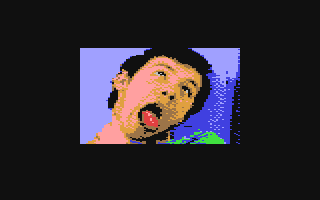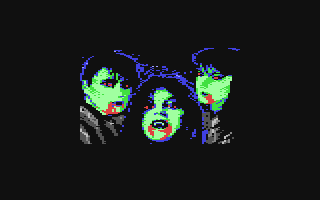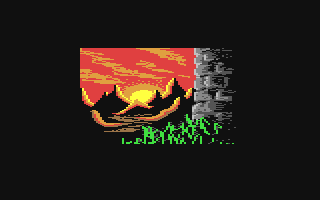|

[this screenshot was not in the original
review]
No. Is it good regardless? Hmmm, well . . . no. The
thing is, this is a classic case of a game depending
on its marketing and license to help it sell. The game
itself isn't bad -- just average. It's well presented
and reasonably well written, but stands as much chance
of scaring a five year old as a DC10 has of flying.
None
at all.

[Early
versions of Dracula had different loading
screens, as you can see above. Do you have
the version with these loading screens?]
Actually,
the morbid ones among you who have a taste for the macabre
and gothic horror will probably find the game interesting.
Actually using the format of a computer adventure to
recreate a scary and mysterious atmosphere is rather
more difficult than it sounds, because of the heavily
punctuated nature of play whilst problems are worked
out. Sustaining that feeling of uneasiness has been
the aim of a few adventure writers in the past, but
never has it really succeeded. Unfortunately, it doesn't
in this game. But what you're left with is a surprisingly
valuable curio that's graced with above average graphics.

The
game is well packaged, with shadowy artwork and blood
coloured text covering the front of a large format box.
The cassette version is in three parts spread across
two tapes. The package is otherwise sparse, with all
the instructions sitting comfortably on the backside
of the inlay. Of course, wherever you look the censorship
label screams out at you.

Part
one of the game is called The First Night and
concerns the young English solicitor who travels to
castle Dracula to settle the final arrangements for
his client's purchase of a house in England. You play
the part of the solicitor. During your travels a last
stop is made at the Golden Krone Hotel, only to find
that the locals are strangely obsessed with something
. . . The nightmare sequences are especially effective
in this early part of the game, but there's little to
do except try different types of cuisine each time you
play.

[this screenshot was not in the original
review]
Arrival,
apart from being the title of an embarrassingly bad
Abba album, is also the title of the second part of
the game. Again you play our solicitor friend. And Dracula
comes into the story proper. This is actually quite
well written. Soon after you arrive and talk with the
count, it becomes obvious that you are not going to
be allowed to escape (but you knew that really, didn't
you). Getting a letter back to England is your only
hope.

[this screenshot was not in the original
review]
Finally,
in The Hunt, you play the part of Doctor Seward,
a psychiatrist who runs a home for the insane. You become
the recipient of the letter sent from Castle Dracula
and decide to find out what's going on. Matters are
complicated somewhat by the untimely disappearance of
Renfield, a normally docile character who has escaped
and is even now being warped and twisted under the evil
influences of the Prince of Darkness . . .

[this screenshot was not in the original
review]
Well,
most people have a fairly good idea of the story and
the game does well to adhere closely to the plot whilst
still allowing the player to make major decisions. Experimentation
soon reveals, however, that there is comparatively little
freedom of play and the few puzzles (that I've encountered)
are very easy to solve. The on-screen presentation is
very good (though some of the text flickers due to a
bad scroll routine), but play is still fundamentally
limited by a parser that only accepts two-word input
and suffers from a small vocabulary. The redefined text,
blood red, American Uncial and all, does little to hide
what seems to be an out of date Quilled effort
trying desperately to be something better . . . An interesting
version of the story but not one worth shelling out
this much for.

[this screenshot was not in the original
review]
|